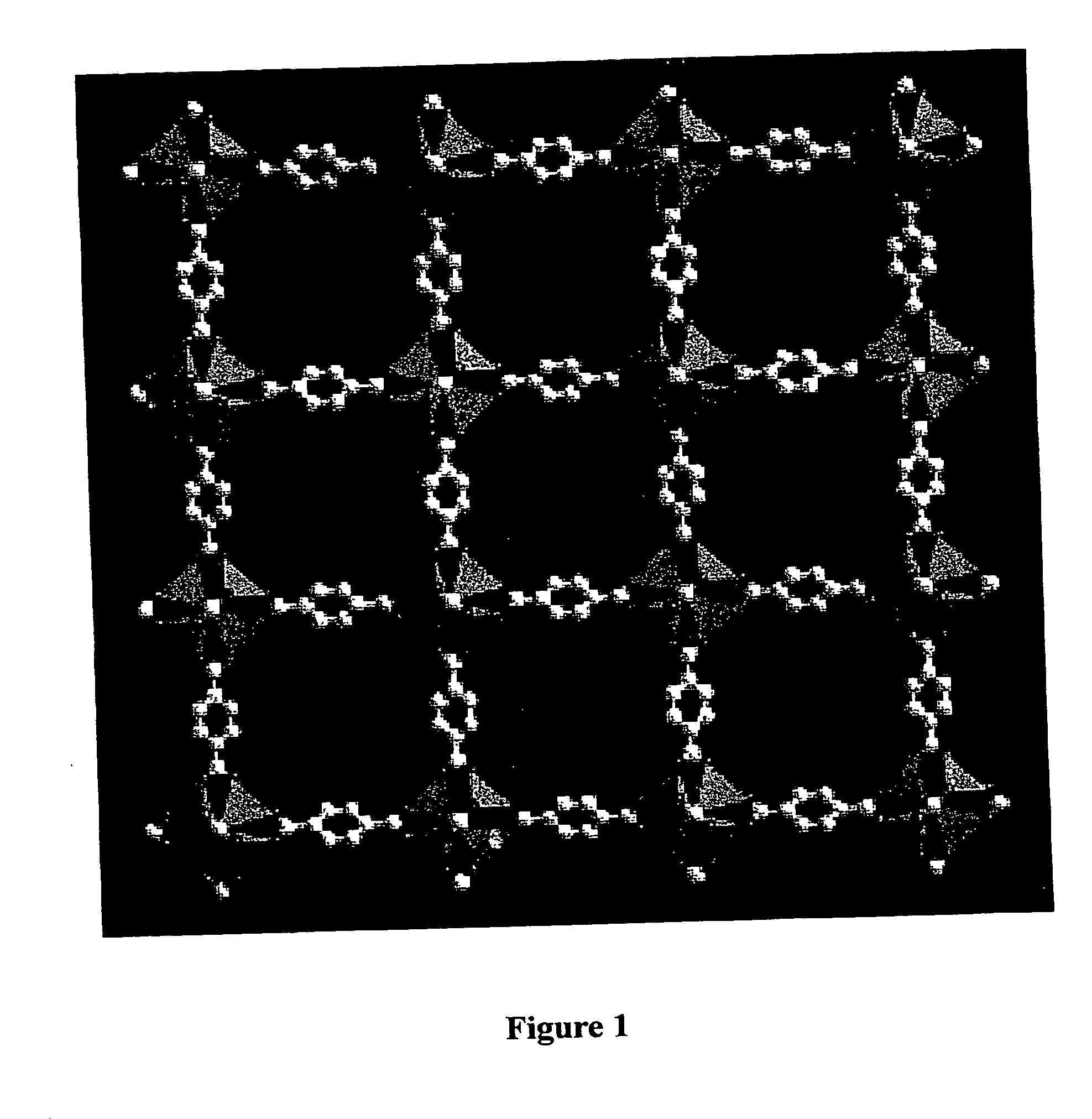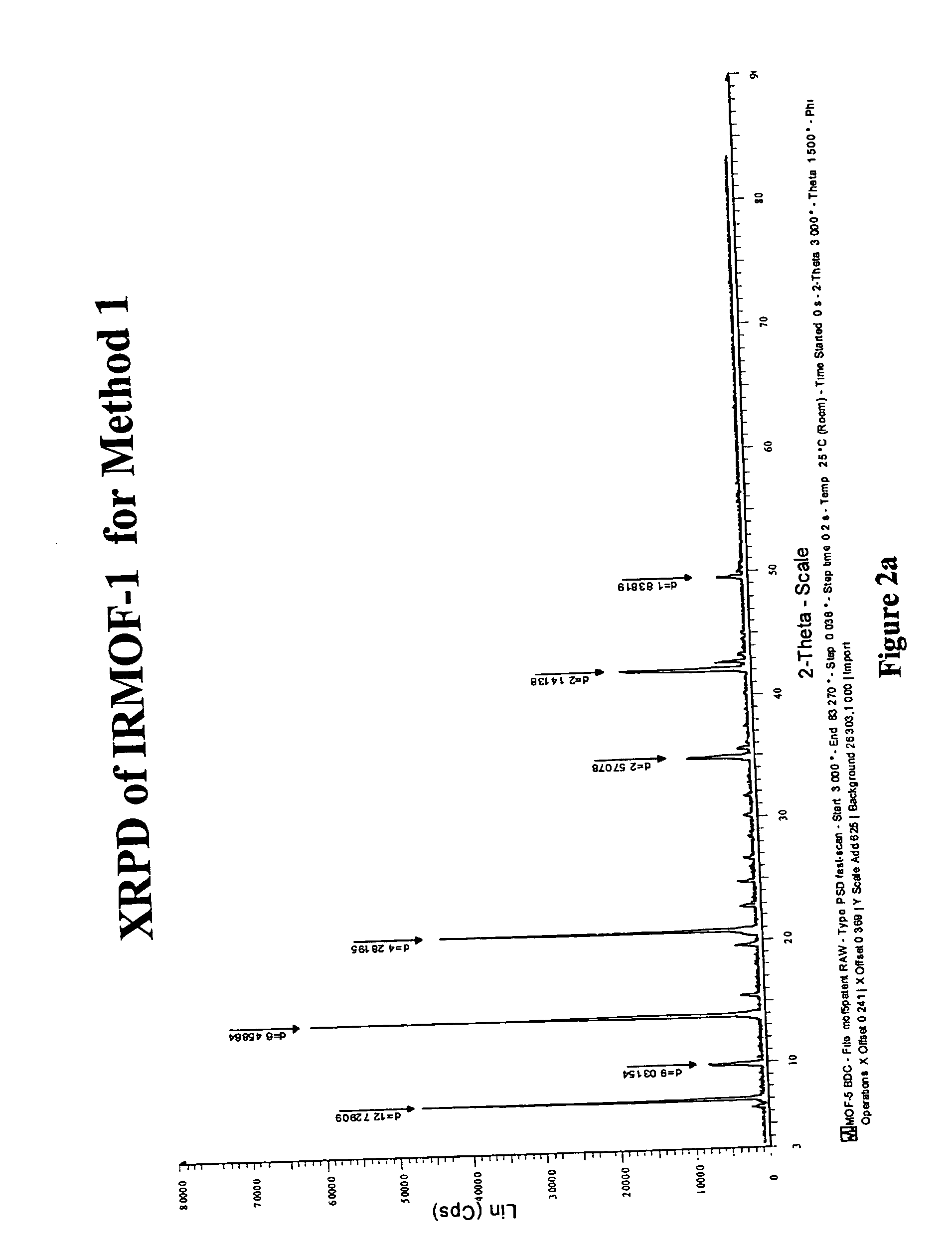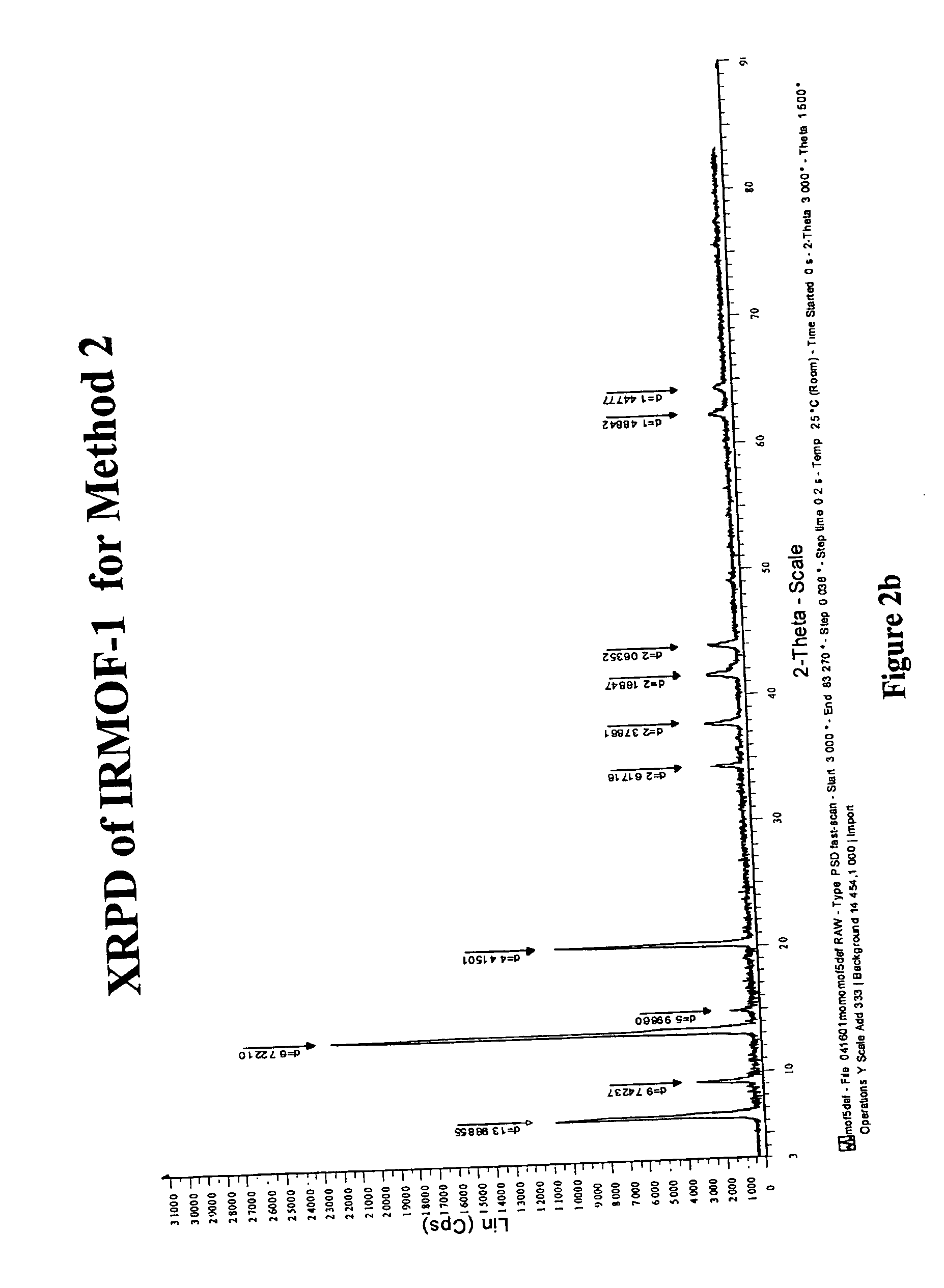Isoreticular metal-organic frameworks, process for forming the same, and systematic design of pore size and functionality therein, with application for gas storage
a metal-organic framework and isoreticular technology, applied in the field of metal-organic frameworks, can solve the problems of inability to consistently and efficiently (with a high yield) render porous materials having predetermined, collapse of the host framework, and low yield, and achieve the highest methane storage capacity and high storage capacity
- Summary
- Abstract
- Description
- Claims
- Application Information
AI Technical Summary
Benefits of technology
Problems solved by technology
Method used
Image
Examples
examples
Preparation of IRMOF-1:
[0128] Method 1:1,4-benzenedicarboxylic acid, H2BDC, (0.070 g, 0.42 mmol) and zinc nitrate tetrahydrate, Zn(NO3)2.6H2O,(0.250 g, 0.84 mmol) were dissolved in 10 mL dimethylformamide, DMF. Then, 0.10 ml of hydrogen peroxide, H2O2, (30% aqueous) was added, followed by the addition of 0.10 mL of 50 times diluted dimethylamine (DMA) (40% aqueous) in DMF. The resultant mixture was diluted again 10 times with DMF. After several days (˜7-10 days), a pure phase IRMOF-1 was formed.
[0129] In FIG. 1, a representation of a {100} layer of the IRMOF-1 framework is shown along the a-axis (C=grey; O=green). The ZnO4 tetrahedra are indicated in purple. The frameworks interconnect to form a 3-D stable, porous crystalline structure.
[0130] The purity of the as-synthesized compound was confirmed by X-ray powder diffraction (XRPD) pattern as shown in FIG. 2a.
[0131] Method 2:1,4-benzenedicarboxylic acid, H2BDC, (0.033 g, 0.20 mmol) and zinc nitrate tetrahydrate, Zn(NO3)2.4H2O,(...
PUM
| Property | Measurement | Unit |
|---|---|---|
| boiling point | aaaaa | aaaaa |
| density | aaaaa | aaaaa |
| temperatures | aaaaa | aaaaa |
Abstract
Description
Claims
Application Information
 Login to View More
Login to View More - R&D
- Intellectual Property
- Life Sciences
- Materials
- Tech Scout
- Unparalleled Data Quality
- Higher Quality Content
- 60% Fewer Hallucinations
Browse by: Latest US Patents, China's latest patents, Technical Efficacy Thesaurus, Application Domain, Technology Topic, Popular Technical Reports.
© 2025 PatSnap. All rights reserved.Legal|Privacy policy|Modern Slavery Act Transparency Statement|Sitemap|About US| Contact US: help@patsnap.com



